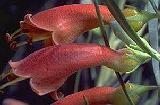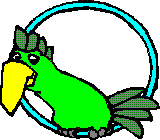Adams begins the book with a short account of the various categories of Australian birds and then discusses bird habitats and behaviour. From this information he describes what is needed to make our gardens attractive to birds - provision of food and water, how to create nesting sites and construct nesting boxes (with lots of ideas for designs and a table of boxes suitable for various birds) and how to provide shelter and protection from cats and other predators. The last half of the book deals with suitable plants and provides advice on how to plan garden layouts e.g. see the plan and elevation sketches on page 62 with the comment "Planting layout with trees and shrubs to give continuous foliage from ground level to 8 metres or higher. Plant in massed clumps to provide effective shelter, feeding...." This is an excellent book, well illustrated with both black and white and colour photographs and George Adams' superb sketches of birds in bush habitats. For more of his sketches see another of his books, "Foliage Birds : Australian Birds and their Favoured Plants" (Popular Books, Frenchs Forest, 1981). It is a 'must' for anyone who is seriously interested in developing a garden for native birds. The fact that the book has been reprinted five times since it first appeared in 1980 shows that it is probably the best book on this topic still available. Reprinted from the December 1997 issue of the newsletter of the Victorian Region of SGAP.  Eremophilas for the Garden
|
 |
Eremophila youngii has proven to be a good garden plant on a wide range of soils. It is a medium-sized shrub which may reach 3 metres. Select the thumbnail image or plant name for a higher resolution image (32k). |
This is not a large publication but it is logically laid out with a single page devoted to each species. A colour photograph is accompanied by brief notes on distribution, characteristics, cultivation and propagation. The photographs, while small, are sharp with excellent colour reproduction. Even a brief scan though the pages of the book will reveal many species that you will want to add to your garden!
My only criticism is that I would have liked to have seen more on propagation, particularly by seed which usually requires some various tricks for successful germination. However, this is a minor quibble.
The book is the work of Colin Jennings, who leads the Eremophila Study Group, Michael Freeborn and Ivan Holliday In attempting to bring this genus to wider attention among growers of Australian plants, the authors have succeeded admirably and the book deserves to be widely read.

Common Australian Fungi: a Naturalist's Guide
Tony Young
Published by University of NSW Press, Sydney, 1994
Softcover, 153 pp, $AUS15
Reviewed by Tony Cavanagh.
Tony Young has had a "love affair" with Australian fungi stretching back over more than 20 years. This second edition of his book is intended as a relatively cheap field guide to common Australian fungi, some 214 in total. There are 16 plates of quite superb photographs and a further 16 of delicate watercolours giving the user a good start in identification of a sizeable number of the fungi being described. In addition, Young gives small line drawings of distinguishing characteristics of each fungus such as spore shape, cross section of the basidia (the cells which produce the spores on special projections called "sterigmata") and sections through typical fungi in his descriptions of individual fungi.
In his introduction, Young makes a good case for the importance of fungi. They are the main recyclers of most dead plant material; we know them in their yeast form and used to make beer and cause bread to rise; important drugs are produced by fungi and the "symbiotic" fungi that live in the roots of many of our native plants such as eucalypts, melaleucas and the like are responsible for the plants' well-being. But fungi also receive a "bad press" - hallucinatory and poisonous mushrooms, the moulds and slimes that rot our plants and others like Phytophthora which kill our native plant by destroying their feeder roots. On balance, Young believes that the good far outweighs the bad.
The author is mainly concerned with the larger fungi of the "mushrooms and toadstools" categories and describes important families, fungal structure, spores and other features of interest such as luminescence, "fairy rings" and the role of fungi in nature. Lastly, he discusses the dangerous side of fungi, the hallucinatory and poisonous species, and gives some tips for avoiding the dangerous ones. However, he emphasises that "there is no known test by which you can tell if a fungus is edible or not". To know the difference, you need to learn to identify the various species.
Hence the bulk of the book is taken up with descriptions of the individual species. The author provides a simple key and information on how to collect and preserve fungi. The descriptions, although brief, are quite adequate and include warning boxes eg "very poisonous", "do not consume with alcohol" etc. The book includes a glossary (most essential for a non-fungi person), an index and a list of further reading.
This compact book is ideal as a field guide to help identify that large group of plants that most of us ignore. I have one small criticism. While the species are supposed to be "common", the author nowhere indicates the geographical coverage of the book. It would be helpful to know this in a future edition.
Recommended.
Reprinted from the December 1996 issue of the newsletter of the Victorian Region of SGAP.

[Front Page] [Features] [Departments] [SGAP Home Page] [Subscribe]
Australian Plants online - March 1998
The Society for Growing Australian Plants


